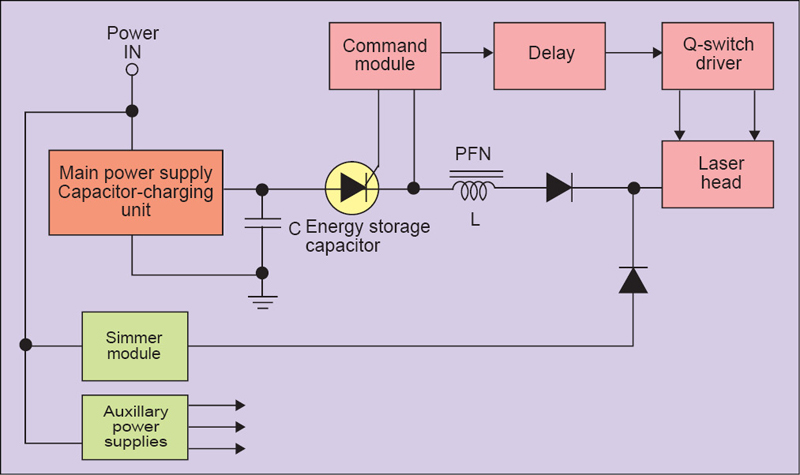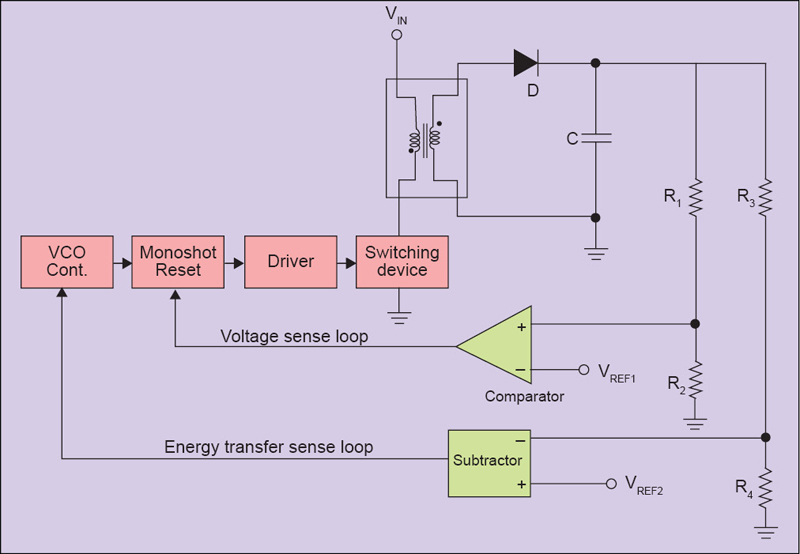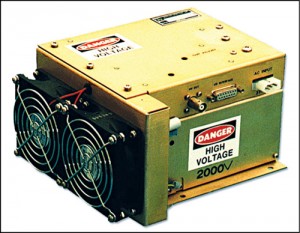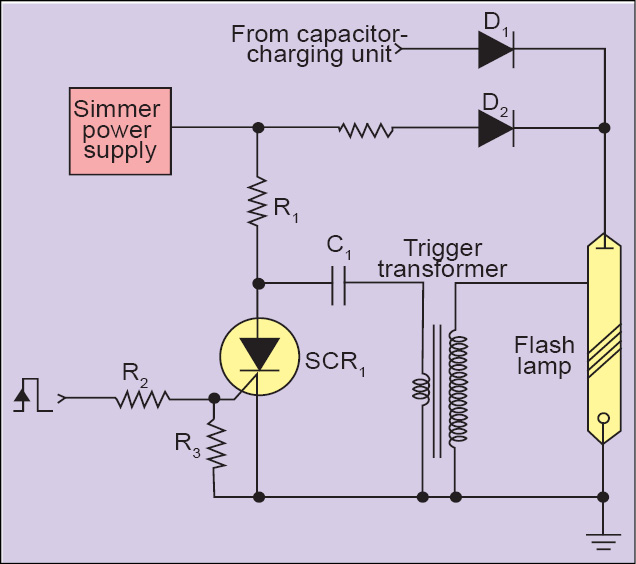Laser rangefinders and laser target designators are the most abundantly used laser systems for tactical battlefield scenarios. Laser rangefinders are used both as standalone devices as well as integral parts of an overall electro-optical fire control system (EOFCS) of armoured fighting platforms.
In the standalone mode, the device is used for determining the range of adversary’s positions by troops in observation and reconnaissance missions. In an EOFCS, the range data produced by the rangefinder is used by a computer to control the gun position for a precise target hit.
The laser source used in such rangefinders is either a Q-switched neodymium-doped yttrium aluminium garnet (QS-Nd:YAG) emitting at 1064nm or an Nd:YAG laser with its output wavelength shifted to an eye-safe wavelength of 1540nm using an optical parametric oscillator. Erbium-doped glass (Er:Glass) lasers are also used to generate an eye-safe wavelength but their use is restricted to rangefinders operating at relatively low repetition rates.

Laser target designators are almost invariably configured around high repetition rate Q-switched Nd:YAG laser sources. These are used in laser-guided munitions delivery applications.
In a typical laser-guided munitions delivery operation, the laser target designator, which could be land based or airborne, irradiates the intended target with laser pulses of a pre-determined pulse repetition frequency (PRF) code, which is also known to the laser seeker head of the guided weapon. The laser seeker head in the laser-guided weapon senses the laser radiation scattered from the target, deciphers the PRF code and then commands the weapon to home on to the source of scatter.
Solid-state laser electronics
When it comes to electronics that go along with laser rangefinders and target designators configured around Q-switched solid-state lasers, we need to discuss the electronics package required for operating the laser source at desired specifications and also the electronics required for range measurement.

Further, pulsed solid-state lasers are either flash-lamp-pumped or pumped by laser diodes. Lasers belonging to 1980s and 1990s were almost exclusively flash pumped. But now they have been largely replaced by laser-diode-pumped versions over the last 10 to 15 years due to much higher optical-to-optical and wall plug efficiency figures.
The following paragraphs describe the electronics packages for flash-lamp-pumped and laser-diode-pumped Q-switched solid-state lasers in general and Nd:YAG lasers in particular. A brief outline on the functions of different modules constituting the overall electronics package, with particular reference to the importance of each module, is presented first, which is followed by a detailed description of each of the important modules along with preferred schematic options and design guidelines.
Electronics for flash-pumped lasers
In the case of flash-pumped Nd:YAG and Nd:Glass lasers, the gain medium is optically pumped by a flash lamp, such as a Xenon or a Krypton flash lamp, whose output optical spectrum matches with the absorption spectrum of the gain medium. There are two possible operational modes in which requisite quantum of energy can be delivered to the flash lamp.

In one of the modes employed in earlier lasers, called non-simmer mode of operation, the electrical energy stored in a capacitor is discharged through the flash lamp by application of a high-voltage trigger pulse to ionise the gas fill and create a low-resistance path.
In the other mode used nowadays, called simmer mode of operation, a low-resistance path is maintained through the flash lamp. The lamp is kept isolated from the energy storage capacitor by an electronic switch, which is triggered to on state by a transistor-transistor logic (TTL) CMOS pulse forcing the stored energy to discharge through the flash lamp.
Fig. 1 shows the detailed block schematic arrangement of electronics package of a flash-lamp-pumped Q-switched solid-state laser. The heart of the system is the main power supply, which is invariably a switched mode one used to charge an energy storage capacitor so as to store the required quantum of energy per pulse to be delivered to the flash lamp.

The main power supply is also called capacitor-charging power supply. The capacitor must charge to the desired voltage in a certain time, which is at the most equal to the reciprocal of the repetition rate of the laser. In practice, it should be slightly less, allowing for some minimum time for flash lamp quenching. The average power that this supply is expected to deliver at its output is the product of the energy per pulse and the repetition rate.










